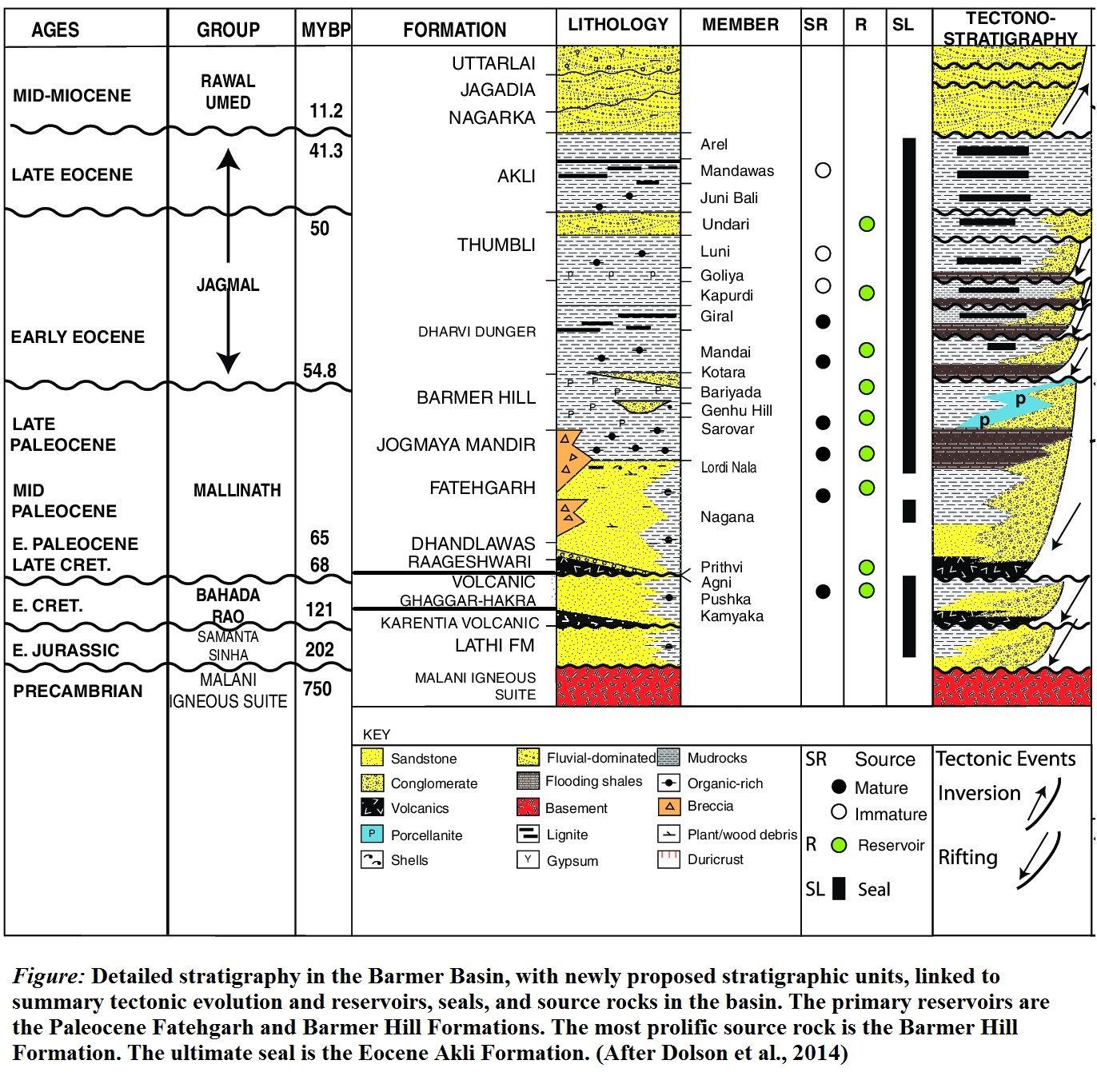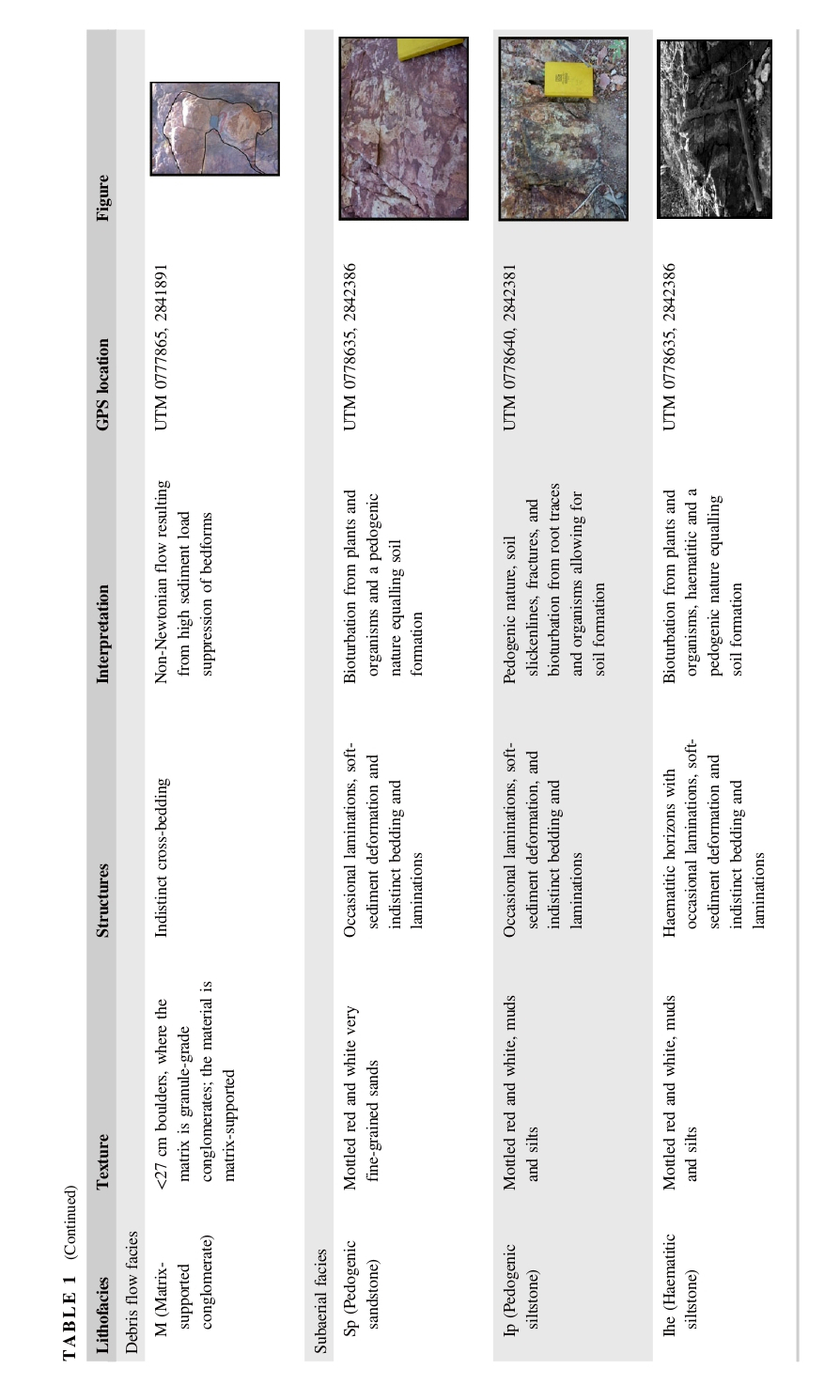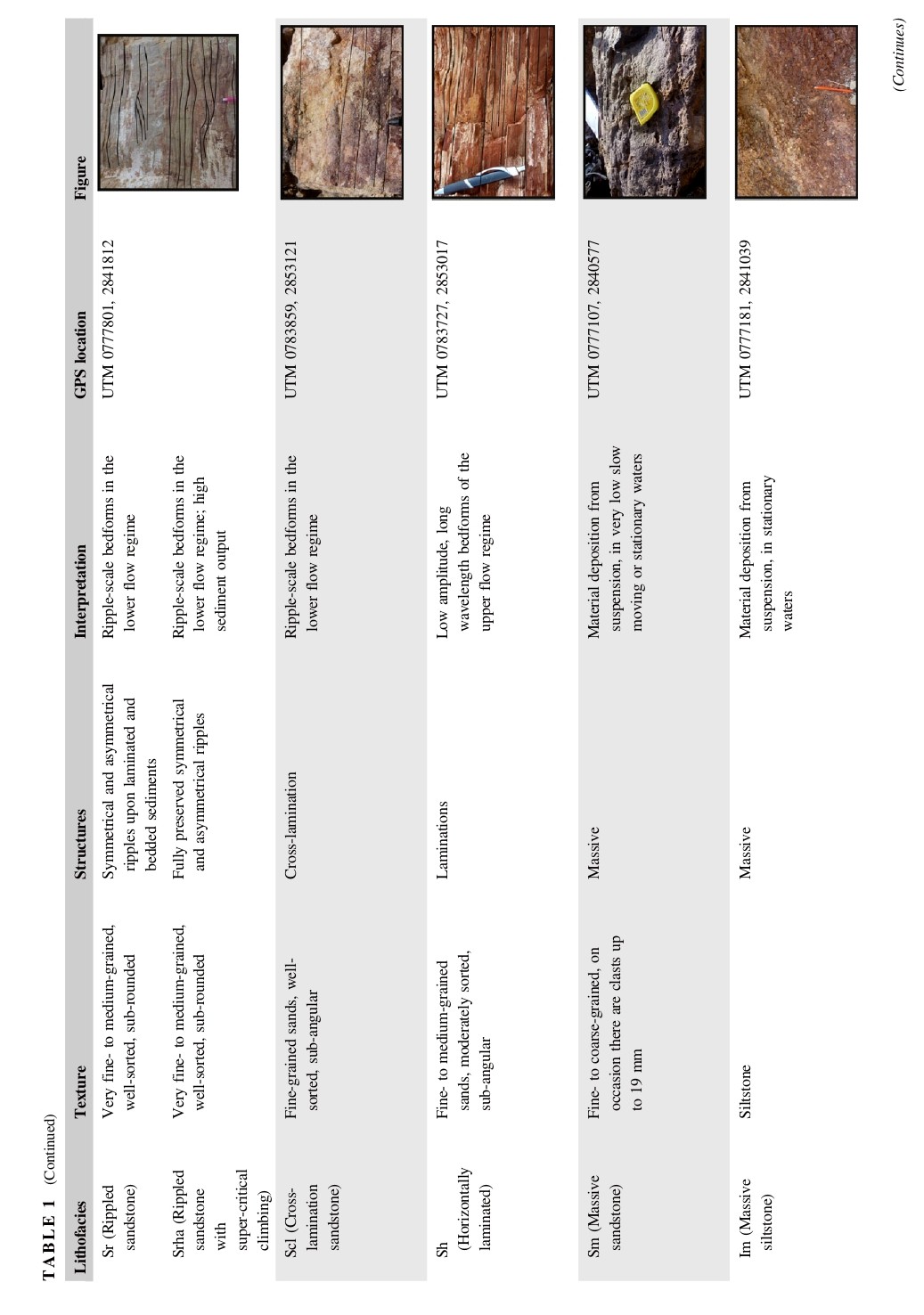Ghaggar-Hakra Fm
Type Locality and Naming
SUBSURFACE: [Referred Publication: John Dolson, Stuart D. Burley, V.R. Sunder, V. Kothari, Bodapati Naidu, Nicholas P. Whiteley, Paul Farrimond, Andrew Taylor, Nicholas Direen, and B. Ananthakrishnan, 2015 : The Discovery of the Barmer Basin, Rajasthan, India, and its petroleum geology : AAPG Bulletin, 99 (issue 3, 1 Mar 2015), pp. 433-465; https://doi.org/10.1306/10021414045]
Lithology and Thickness
Sandstone. Comprised of sandstones. It is divided into two members: Pushka Member, Kamyaka Member; or subdivided by named sandstone units (see Depositional setting)
[Figure 1: Detailed stratigraphy in the Barmer Basin, with newly proposed stratigraphic units, linked to summary tectonic evolution and reservoirs, seals and source rocks in the basin. (Dolson et al., 2015)]
[Figure 2: Table 1: Fluid, debris, and subaerial facies of the Ghaggar-Hakra Formation developed from the logged and paneled data of the formation ((after Hazel Beaumont et al., 2018)]
Relationships and Distribution
Lower contact
Unconformably overlies the Karentia Volcanic Fm and Lathi Fm.
Upper contact
Unconformably overlain by the Raageshwari Volcanic Fm.
Regional extent
GeoJSON
Fossils
Age
Depositional setting
Additional Information



